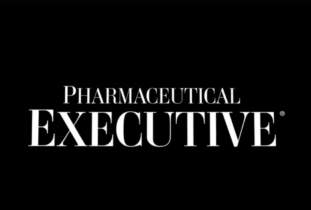Overcoming supply chain issues and inflation through improved demand forecasting and analytics
With experts predicting a gloomy economic outlook in 2023, medical device companies must become smarter manufacturers. Supply chain challenges and delays, increasing labor and raw material costs, and tightening hospital budgets are straining the industry. To brace themselves against the impact, manufacturers need accurate demand forecasting and analytics for revenue optimization.
A smart manufacturer can anticipate demand before distributors, customers, or resellers ask for it. In other words — these are companies that produce the right product quantity to fill immediate requests without wasting time and resources creating excess devices that sit on shelves. The current economic conditions significantly complicate demand forecasting.
Let’s take a closer look at the impact of supply chain issues and inflation on medical device manufacturers and explore concrete steps companies can take to craft a demand strategy.
The Ripple Effect of Supply Chain Disruptions and Inflation
We are seeing three significant impacts from supply chain disruptions and inflation:
1. Product delivery delays
Nearly 80% of Deloitte survey respondents are experiencing extended product lead time due to the semiconductor shortage. Four in ten medtech executives believe supply chain issues will be a top factor affecting revenue in 2023.
2. Pressure on average selling prices
Inflation and rising material costs strain average selling prices (ASPs) and margins. With pricing locked in through contracts, increased production costs eat into revenue.
3. Tighter hospital budgets
According to Kaufman Hall, median hospital margins remained negative through November 2022. With tighter budgets, hospitals will find another supplier if a manufacturer cannot meet price requirements.
Medtech manufacturers can respond to these challenges by tightening their forecasting through data and analytics.
Becoming a Smarter Manufacturer
The medical device market is expected to reach a value of $850 billion by 2030, an increase of $300 billion from 2021. While the demand for medtech will be there, current economic factors make anticipating the market difficult. Here are some concrete steps companies can take to improve their business strategy:
Open Lines of Communication Between Departments
Successfully anticipating demand requires open communication between the financing, inventory management, and sales teams. The shared knowledge provides visibility into all aspects of the market.
Salespeople are the eyes and ears on the ground. They can help answer questions like:
- Which providers have demand?
- How serious is the demand?
- What are customers asking for?
- Are the deals they are offering realistic?
Inventory management teams strategize how to tie that demand to current and future inventory, and the finance department defines pricing guidance based on costs, past deals, and apparent demand. From there, these teams can communicate to sales what prices, discounts, and rebates they can offer. Using combined data from all teams empowers informed decisions.
Optimize and Leverage Analytics
Analytics are the foundation of smart decision-making. The digital age has generated loads of data. While the amount may seem overwhelming, harnessing the information strengthens forecasting and price setting.
Comprehensive analytics require a central location for all data. With the sheer volume of data points, spreadsheets no longer cut it. Theoretically, spreadsheets can centralize data. However, they require manual search, extraction, and analysis. While nearly all medtech companies rely on spreadsheets in some capacity, this approach creates blind spots and lacks scalability. The likelihood of a company missing something important is too high.
Enterprise resource planning software manages all the data and creates dashboards and analytics that give day-to-day visibility on operations, sales, and supply chains. Revenue Management systems provide capabilities that produce insights about customer memberships and affiliations, pricing tiers, and past performance to help set the right price and drive deals that align with pricing and portfolio strategies. This technology can identify patterns overlooked by humans and incorporate additional external variables to improve forecasting and profitability.
Collecting and analyzing data gives medical device manufacturers more leverage in negotiations through an understanding of the market landscape, demand, material costs, billing, payments, current product pricing, compliance, and existing contracts. Salespeople can also quickly access information to answer customer questions.
For an example demonstrating analytics’ value, consider a typical, everyday scenario: a healthcare provider placing an order for a medical device. In this scenario, manufacturers want to ensure they are charging the right price the first time, but with multiple contracts leading to complex pricing rubrics, the wrong price may be implemented. If an incorrect price is charged at the time of sale, the deal may, in turn, require a credit and rebill, tying up money in unpaid invoices or collections. On top of that, rebills require extensive time and resources from both sides and can strain relationships. The process creates downstream effects such as delayed or incorrect buyer rebates, incorrect sales rep compensation, and inaccurate revenue recognition. Most surveyed medtech executives report instances of price discrepancies (77%) and incorrect pricing (83%).
How do you avoid a credit rebill? Use an EDI 832, aka a price/sales catalog containing information on what all customers pay for all products. This automated system enables manufacturers to give the provider expected pricing documentation, allowing the provider to review and proactively identify any issues before being invoiced — saving time, money, and hassle for everyone.
In an uncertain economy, medtech companies must be strategic when setting prices, manufacturing products, and creating goals. Planning is more difficult without analytics. Companies hoping to become smarter manufacturers should seek automation solutions to provide crucial insights while minimizing oversights and manual work.
Kyle Forcier is a Senior Director of Life Sciences Product Marketing for Model N. For more than 15 years, Forcier has focused his time in the life sciences space helping manufacturers increase their revenue, maintain compliance, and bring innovative ideas to the marketplace. He currently helps shape Model N’s strategic direction focusing on bringing complex, valuable solutions to the market to solve long standing operational challenges within the medtech industry.












